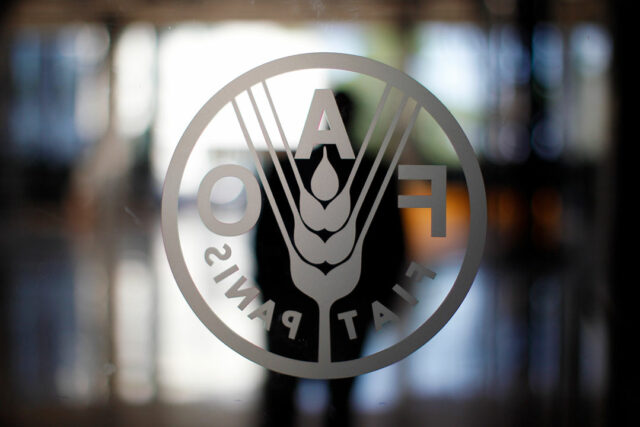The Fiddler on the Roof is a 1964 drama-musical by Joseph Stein, a Jewish-American writer, with music by Jerry Bock and lyrics by Sheldon Harnick. The story is based on “Tevye and his Daughters” (or “Tevye the Dairyman”) and other tales by Sholem Aleichem. Fiddler (both theater and film versions) has won many prestigious awards and is one of the most replayed and remembered musicals for over 55 years, until the COVID-19 pandemic closed all theaters in 2020. It was the same start of the Russian attack on Ukraine, a conflict which has escalated to today.
The Gertrude C. Ford Center for the Performing Arts relates the historical background of Fiddler:
“Fiddler on the Roof is the story of life in a small Russian shtetl in 1905, when Russia was still an empire, ruled by Tsar Nicholas II, head of the dictatorial Romanov dynasty. While much of Western Europe was becoming more free and democratic, Nicholas was determined to hold on to ‘absolute autocracy’ in his words. This, coupled with his seeming lack of common sense as his country stumbled through crisis after crisis, would eventually lead to the downfall and destruction of the Romanovs.
“Along with other abuses of human rights, Nicholas’ administration involved itself in anti-Jewish propaganda, which incited fear and hatred of Jews among many non-Jewish citizens, and often led to violence. The three-year period from 1903 to 1906 (the timeframe of Fiddler) was a particularly terrifying time for Russian Jews, as one pogrom after another raged in Western Russia. (A pogrom is defined as the ‘organized killing of a minority.’ Some dictionaries actually include a reference to tsarist Russia in their definition.)
“There were many pogroms in Russia in the second half of the 19th century, including 166 in the year 1881 alone. In 1905, the year in which Fiddler on the Roof begins, there were at least six pogroms in Imperial Russia, occurring in such major cities as Kishinev (capital of present-day Moldova), Odessa (in present-day Ukraine and the site of a catastrophically huge massacre of Jews in WWII), and Minsk (capital of present-day Belarus). In all, these pogroms claimed the lives of no less than 1,500 Jewish citizens, a total of four for each day of that year.
“Most of these pogroms occurred within an area referred to as the Pale of Settlement, the area of Russia in which Jews could legally settle. Shtetls such as Anatevka, the fictitious village in Fiddler on the Roof, began to disappear as discriminatory laws against Jewish citizens forbade them from living in rural areas, or in towns of less than 10,000 people. Indeed, as Fiddler begins, the people of Anatevka have just received word of the Tsar’s edict, which will shortly evict them from their homes. By the musical’s end, the people of Anatevka are packed up, some moving to America, many others to Krakow (in modern-day Poland), for what they hope will be a new and better life.”
The story of ethnic cleansing and the ousting of the Jews from their land in Fiddler likewise comes to mind, when on Oct. 7, 2023, the Palestinian Sunni Islamist group Hamas (an FTO or foreign terrorist organization according to the US) led surprise attacks against Jewish Israel from the Gaza Strip by land, sea, and air (crsreports.congress.gov, Oct. 17, 2023). In the violent retaliation of Israel, “more than 15,000 Palestinians have been killed in Gaza since Oct. 7. In Israel, the official death toll stands at about 1,200” (aljazeera.com, Dec. 1, 2023).
David Byman of the Center for Strategic and International Studies (CSIS) said, “Part of what Hamas wanted involved revenge for what it saw as past Israeli attacks and the constant Israeli occupation of the West Bank, arrest of Hamas leaders, isolation, and bombing of Gaza… Hamas leaders may have believed they were losing popular support (as revolutionary governors) in Gaza as they were unable to guarantee basic necessities for its citizens, let alone dent the consistent 45% unemployment rate in Gaza. Since the implementation of a semipermanent siege on Gaza in 2007, Israel has controlled much of the electricity, food, and water to the enclave. Gaza has spent half of its day without power since 2019, with a sustained gap in electricity supply. Gaza has also suffered from chronic water shortages, with its outdated or destroyed water infrastructure, 97% of the water in Gazan homes is unfit to drink. The economic situation is equally dire, with over 70% of families in Gaza dependent on NGO and international aid for their basic needs” (csis.org. Dec. 6, 2023).
Notice the ironic role reversal from the Jews in 1905 being held down by the Russians, to the present-day Israel Jews having the upper hand over the Palestinians, as revealed in the intimidation through the curtailing of basic human needs and rights, and the economic retardation in the Israeli-controlled Gaza strip, as earlier suggested by the CSIS analysis.
Israel’s rise to recognition and power started with the British 1917 Balfour Declaration, which unilaterally called for the establishment of a “national home for the Jewish people” in Palestine, despite the fact that Jewish people made up less than 15% of the population there at the time (vox.com, Oct. 19, 2023). “The Allied powers in the war backed the declaration, and after the war, the newly created League of Nations gave Britain a mandate to temporarily rule Palestine until the Jewish state could be created. The British thereafter adopted immigration policies that encouraged more than 100,000 Jews to immigrate over the next two decades,” Vox recounts.
After World War II, tens of thousands of Holocaust survivors began moving to Palestine, encouraged by the Zionist movement. The United Nations agreed to partition Palestine into two states, one for the area’s Jewish population and another for the Arab population, with the city of Jerusalem to be governed by a special international entity. However, local Arabs and Arab countries objected to the plan.
Following a period of extreme violence before, during, and after the war — particularly on the part of Zionist militias — British forces withdrew from Palestine, and Israel declared its independence on May 14, 1948.
That started the first Arab-Israeli war, in which Egypt, Iraq, Jordan, Lebanon, and Syria — opponents of Israel’s declaration of independence — invaded the country. Though the US immediately recognized the new provisional Israeli government, it did not get involved in the conflict militarily. Israel won the war and with it, 77% of the previous Palestinian mandate territory, including land that the United Nations had intended to allocate to the Arabs.
Since 1948, Israel and Palestine have been fighting each other for territory — for Israel to keep its preferred and advantageous possession and control of Palestine, and to get more of Palestine; and for Palestinian Arabs to get back the land which they had won in war with the emperor Heraclius in 636 A.D. Palestine, and indeed all of Syria, was then in Muslim hands.
The story of “the Pale” — the boundaries that kept the Jews monitored and controlled in Anatevka — is replicated in boundaries fiercely guarded today in the partitioned Palestinian land majority-owned by Israel. In 2015 a displaced persons camp southwest of Kyiv named Anatevka was built by Chabad Rabbi Moshe Azman to house the Jews fleeing the 2014 Russian invasion of Ukraine (Liphshiz, Cnaan, July 21, 2015. “Fiddler on The Roof Shtetl To Become Real-Life Refuge For Ukraine’s Jews”).
The story of Tevye and his neighbors being driven out of Anatevka ends with the local fiddler standing on the roof of an empty home, playing an almost comical jig as the Jews move out to new, foreign places for a new life.
Hope — that is the meaning of The Fiddler on the Roof.
Christmas is nearing, and for Christians, the fiddler on the roof might well be the angels singing on the roof of the humble stable/shed where Jesus Christ the Redeemer was born. Hope for peace and harmony among all people.
Amelia H. C. Ylagan is a doctor of Business Administration from the University of the Philippines.
ahcylagan@yahoo.com


























